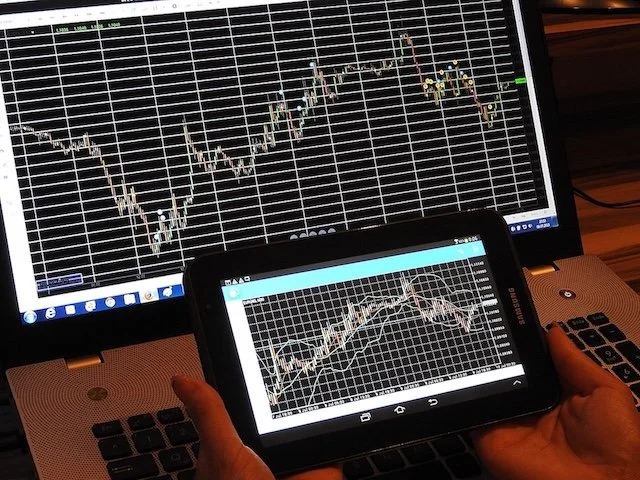CFD trading for beginners: key principles every new trader should understand in 2025
Contracts for Difference, or CFDs, are a kind of derivative product that lets traders speculate on the price movement of an asset without actually owning it. Instead of taking delivery of the underlying commodity, share, or currency, the trader agrees with a broker to exchange the difference in the asset’s value from the opening of the position to its close.
This flexibility means that CFDs can be used to go long, benefiting from rising prices, or short, aiming to profit from falling prices. If you’re interested in CFD trading for beginners, the key is understanding that this flexibility comes with both opportunity and significant risk. So, let’s find out more.
How CFDs Work
CFDs track the price of an underlying market in real time. If you believe a stock index will rise, you can buy a CFD linked to that index. If you think it will fall, you can sell instead. The difference between your entry and exit prices, multiplied by your position size, determines your profit or loss.
CFDs can be applied to a wide range of markets, including:
● Indices – Track performance of groups of stocks, such as the FTSE 100 or Nasdaq.
● Forex – Trade currency pairs like EUR/USD or GBP/JPY.
● Commodities – Access markets like oil, gold, or coffee.
● Equities – Trade individual company shares without owning them directly.
The Role of Leverage
One of the defining features of CFD trading is leverage. By using margin, traders can open positions much larger than their account balance would otherwise allow. For example, with 10:1 leverage, a deposit of £1,000 can control £10,000 worth of market exposure.
While leverage can magnify gains, it also magnifies losses. Even a small move against your position can result in a significant loss, making risk management essential. Regulatory bodies, such as the Financial Conduct Authority (FCA) in the UK, set limits on maximum leverage for retail clients to help reduce risk exposure.
Costs and Fees to Consider
CFD trading involves specific costs that vary depending on the market and product:
Spread
The difference between the buy and sell price.
Commission
A fixed cost per trade on certain instruments.
Overnight financing
A fee for holding leveraged positions overnight, applied to long or short trades.
Currency conversion charges
If you trade in a market priced in a currency different from your account.
Understanding these costs is essential for accurate profit and loss calculations.
Why Regulation Matters
The CFD industry is regulated in most developed markets, and this oversight is crucial for protecting traders. Authorised firms must follow strict operational, financial, and conduct standards. In the UK, the FCA enforces rules designed to ensure transparency, fair dealing, and client fund protection.
Trading through a regulated provider adds a layer of security, but it does not remove the inherent risks of leveraged trading.
Technology’s Role in Modern CFD Trading
Advances in trading platforms have changed the way CFDs are accessed and managed. Today’s platforms deliver:
● Real-time data feeds – Essential for reacting to market movements quickly.
● Charting and analysis tools – Indicators, drawing tools, and multiple timeframes.
● Mobile access – Trade and monitor positions from anywhere with an internet connection.
● Execution speed – Minimal latency between order placement and market entry.
Providers like ThinkMarkets offer multi-device access, so traders can switch between desktop, web, and mobile apps without losing visibility or control. For beginners, having stable, intuitive technology can help remove unnecessary complexity from the learning process.
Common Strategies for Beginners
While CFDs can be used for a variety of strategies, beginners often start with simpler, clearly defined approaches.
Trend-following
Identifying and trading in the direction of the prevailing market trend, often using moving averages or trendlines for confirmation.
Breakout trading
Entering positions when price moves beyond a key support or resistance level, often on higher-than-average volume.
Range trading
Buying at perceived support levels and selling at resistance when markets are moving sideways.
Regardless of strategy, position size, and risk per trade should be set before entering any position.
Managing Risk from the Start
Risk management should be part of a CFD trading plan from day one. This includes:
● Stop-loss orders – Automatically end a trade at a set level to limit losses.
● Take-profit orders – Lock in gains at a predetermined price.
● Appropriate leverage use – Avoid maximising available leverage on every trade.
● Diversification – Avoid concentrating all positions in one asset class.
● Regular review – Analyse both winning and losing trades to refine your approach.
For beginners, limiting the percentage of capital risked on a single trade, often 1–2%, can help preserve account longevity while gaining experience.
The Importance of Education and Practice
Jumping straight into live CFD trading without preparation can be costly. Many traders begin with a demo account to practise order placement, explore platform features, and test strategies without risking real capital.
This stage also helps build familiarity with how markets react to news events, economic releases, and technical patterns. Educational resources, including webinars, courses, and market analysis articles, can shorten the learning curve.
CFDs and Market Access in 2025
In 2025, CFD trading continues to appeal to retail traders because of its flexibility and broad market access. Traders can move between asset classes quickly, capitalising on opportunities in indices one day and commodities the next.
Technology and connectivity improvements have also reduced barriers to entry. With low-latency execution and mobile-compatible platforms, managing positions no longer requires being tied to a desk.
That said, the accessibility of CFDs should not be mistaken for simplicity. Every market carries its own risks, and the added leverage in CFDs can make outcomes highly unpredictable without a structured approach.
Oversight and Best Practices for Longevity
Regulators such as the FCA, ESMA in the EU, and ASIC in Australia continue to focus on ensuring CFDs are marketed and provided in ways that protect retail clients. This includes:
● Mandatory risk warnings showing the percentage of retail accounts that lose money.
● Limits on maximum leverage for retail clients.
● Restrictions on certain promotional incentives.
● Requirements for segregated client funds.
By combining the safeguards of a regulated provider with disciplined personal risk management, traders can create a more sustainable trading environment for themselves.
Getting Started with CFD Trading
CFD trading offers a flexible way to participate in global markets, from forex to commodities and equities. For beginners, the focus should be on building knowledge, practising with minimal risk, and understanding both the mechanics and the implications of leverage.
Tools, technology, and access have never been more advanced, but these advantages only add value when paired with a cautious, informed approach. Whether trading full-time or as a side interest, maintaining a balance between opportunity and risk is the foundation for any future progress.
FAQs
What is a CFD?
A Contract for Difference lets traders speculate on an asset’s price movement without owning it.
Can I trade multiple markets with CFDs?
Yes, CFDs cover forex, indices, commodities, and equities.
Is leverage always good?
No. It can amplify gains but also increase losses, so it must be used carefully.
Are CFDs regulated?
In the UK, the FCA oversees CFD providers, setting leverage caps and conduct rules.
Do I need a strategy?
Absolutely. Structured planning and risk management are essential for sustainable CFD trading.































Continue reading…